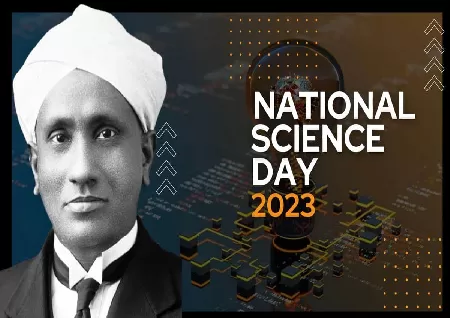National Science Day 2023 celebrated on 28th February

Every year on February 28, Chandrasekhara Venkata Raman, often known as C.V. Raman, an Indian scientist and surgeon, is honoured on National Science Day for inventing the "Raman Effect." It is observed annually to honour the importance of science and to serve as a reminder of the impact it has had on society. The event this year bears the subject "Global Science for Global Health" in recognition of India's G20 chairmanship. Notably: To honour the revelation of the discovery of the "Raman Effect," the Indian government established February 28 as National Science Day in 1986, under the leadership of the country's then-prime minister Rajiv Gandhi. Raman was born in 1888 in Trichy (current-day Tiruchirapalli), in the Madras Presidency, to a family of Sanskrit intellectuals.He graduated from Presidency College in Madras with a BA degree at the young age of 16, taking first place in his class. At the age of 18, while pursuing his MA, he had his first research work from Presidency College published in the Philosophical Journal.
What does "Raman Effect" mean?
The Raman Effect is the phenomenon where a portion of the light dispersed by a liquid when it passes through a stream of light is of a different hue. As a light beam is refracted by molecules, the wavelength of the light changes, which is what causes this to happen. In general, light can interact with an object by being transmitted, refracted, or reflected. As light is dispersed, one of the things that scientists examine is whether the particle it encounters with has the ability to modify its energy. The Raman Effect occurs when the vibrations of the molecule or substance being seen alter the energy change of the light, changing its wavelength as a result. According to CV Raman and co-author KS Krishnan's first publication to Nature, "A Novel Kind of Secondary Radiation," 60 different liquids had been examined, and each one revealed the same result: a minuscule portion of scattered light had a different colour from the incident light. So, according to Raman, "it is a phenomena whose global character has to be acknowledged."
The importance of the discovery
The discovery made by CV Raman shocked the world since it had far-reaching effects that went much beyond Raman's initial goals. According to Raman himself, "The nature of the scattered radiations permits us to acquire an insight into the ultimate structure of the scattering substance," he said in his 1930 Nobel Prize acceptance address. Raman's finding was important for quantum theory, which was popular in the scientific community at the time. The finding would be used in chemistry as well, leading to the development of a brand-new discipline known as Raman spectroscopy as a fundamental analytical technique for performing nondestructive chemical examination for both organic and inorganic molecules. The uses for Raman spectroscopy have expanded throughout time as a result of the development of lasers and their capacity to concentrate significantly stronger light beams.
Related queries to this article
- National Science Day 2023
- Chandrasekhara Venkata Raman
- Indian scientist
- Raman Effect
- India's G20 chairmanship
- CV Raman
Read more articles and stories on InstaSity Trending Topics.

